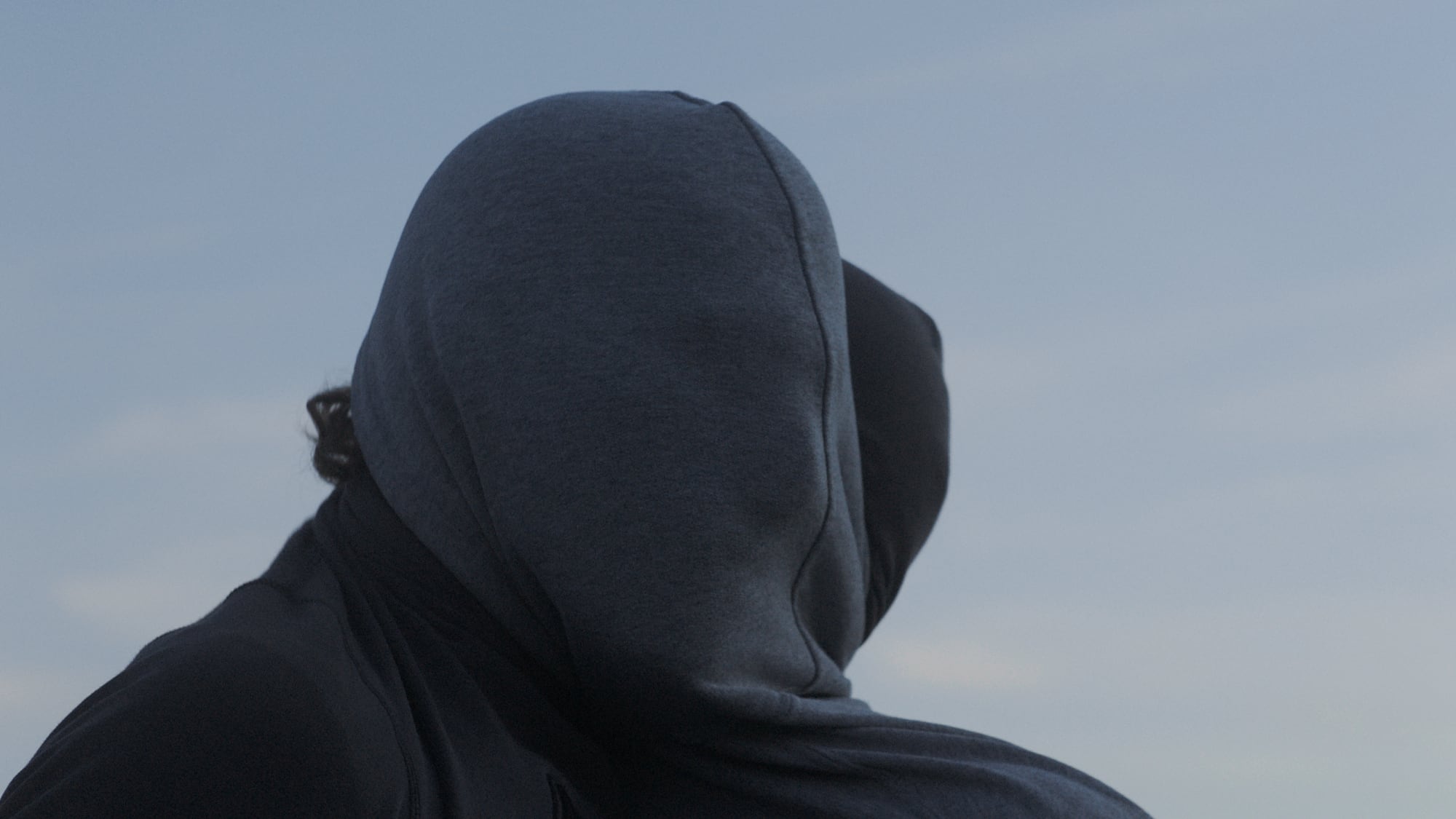
As a performer, Harry Price nurtured a keen interest in film through his work with London dance company Balletboyz – who we last saw on DN with in-flight safety demonstration inspired short Flight – and as an independent filmmaker felt it only right to collaborate work with the company for his directorial debut LIMET. Inspired by Price’s desire to dig into the complexities of human relationships and translate intricate emotions and feelings into movement, LIMPET showcases a lived in intimacy through close handheld camerawork and simple yet effective cinematography, all brought together by a stark, realist and layered sound design. As intended, there is no clear linear narrative to the film; instead, recurring themes of water and the juxtaposition of public and private spaces all echo through the short, uniting its components into a great whole. Ahead of today’s Directors Notes LIMPET premiere, we spoke to Price about finding a key moment in the choreography working within the confines of a hoodie, capturing the smallest details in the movement to captivate the audience and shifting between longer still shots and more frantic flashes to create a disorientating experience for the viewer.
How did your work and history with BalletBoyz develop into the making of this your first film?
I joined BalletBoyz as a company dancer in 2015 at the age of 20 and spent the majority of my dancing career with the company. The founders and directors, Michael Nunn and William Trevitt, are pioneers in the world of dance and film and have a reputation for nurturing young talent. I feel fortunate to have spent many years in the company, creating new work and touring the world. My interest in film developed during my time with the company, and in my mid-twenties, while still dancing, I began exploring my own creative practice. Michael and Billy were incredibly supportive, allowing me to use their equipment for my early experiments and offering valuable advice. After I left the company in 2020, we stayed in touch. When considering who to approach with this film project, BalletBoyz felt like a natural fit. In recent years my work has expanded in many different directions. I now create work that exists in both live and digital spaces, collaborating with artists in music, fashion, film, art, theatre and performance. I am very grateful to BalletBoyz for their ongoing support.
I was curious about how I could let a series of actions and images describe a feeling or situation.
What experience were you looking to explore in LIMPET?
I’m often looking at how we negotiate relationships. I’m interested in how we move with, against, and around the people and things in our lives. With this project, I wanted to explore the complexities of trying to relate to another person. I wanted to take an impressionistic approach. I chose not to work with a particular narrative. Instead, I was curious about how I could let a series of actions and images describe a feeling or situation. The goal was not necessarily to evoke a specific emotion from the viewer. More than anything, it was important that the work felt functional and direct. I didn’t want to add anything beyond the pure essentials, and I was conscious to stay away from it becoming earnest, romantic, or dreamy.
With this project, I was particularly interested in looking at how we perceive the stillness of an image while so much is invisibly occurring in the mind. I was curious about what that could look like. I began by asking myself the following questions: How do you come to a situation? What do you bring with you? What do you take away with you? What is left behind? What is important and what can you let go of?
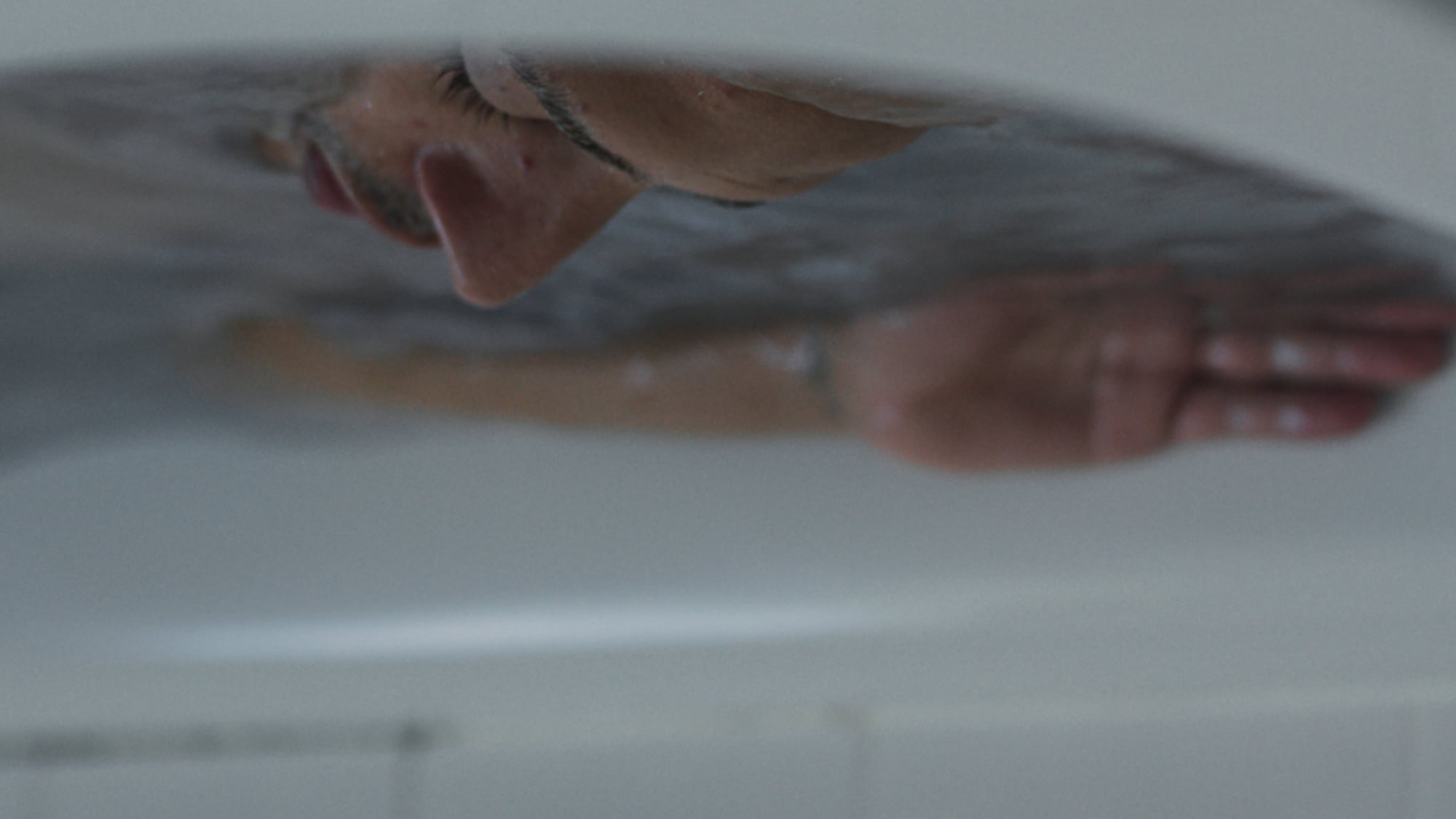
Can you elaborate on the significance of water and the continued presence of it throughout the film?
Water is a key theme in both the sound and visual world of the film. It’s an interesting substance that can shift significantly depending on the environment and situation. In a bath, water embraces us, offering relaxation and comfort. Yet, the same element can pose a dangerous threat that demands respect and caution in the unpredictable currents of a river. I wanted to play on this in the film. Instead of showcasing dramatic performances from the characters, I aimed to use water to guide the emotional world. In LIMPET water acts almost as a narrator. Viewers see and hear water boiling, filling up, draining, roaring, rumbling, in moments of stillness and so on.
We discovered the image with each of them inside the other’s hood and it felt immediately interesting – strange, intimate, suffocating, tender, all at once
Within its hooded confines, the choreography has a fluid and natural feel.
The film ranges from very pedestrian movement to more physicalised choreography. During the choreographic process, there was a lot of creative play. Once in the studio with the dancers Courtney Deyn and Connor Scott, I used tasks and structured improvisation to discover movement collaboratively. I originally wanted to build five sequences that looked at different interactions between the two of them. At the time, I had begun exploring images that combine clothing with movement. For one of the interactions I was looking at the word ‘grasping’. I brought two hoodies into the studio to explore this and we discovered the image with each of them inside the other’s hood and it felt immediately interesting – strange, intimate, suffocating, tender, all at once. It seemed like a very unique portrayal of dependency. Once we found this image, it was clear that this is where the focus should be and we worked together to understand how it moved choreographically.
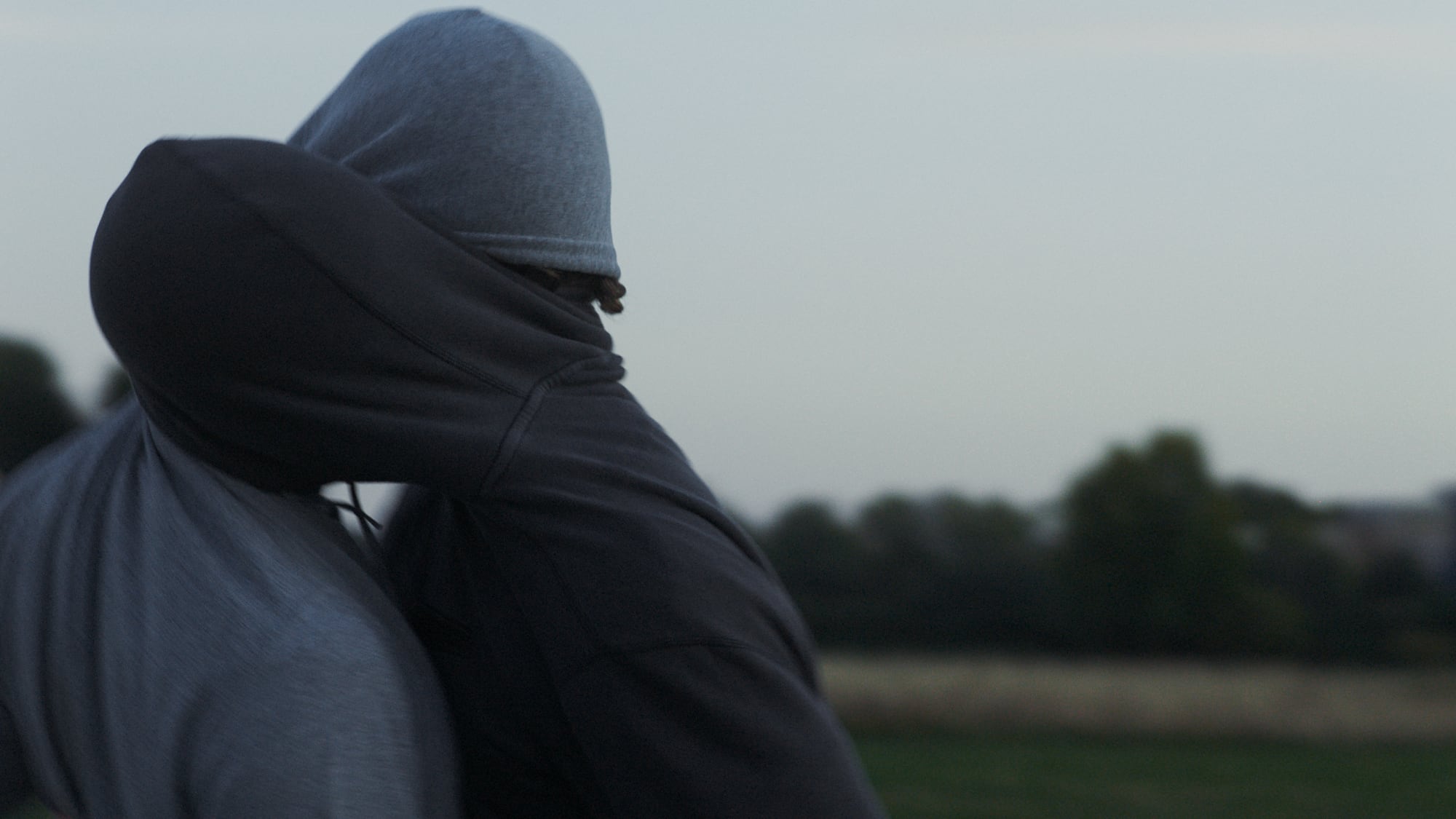
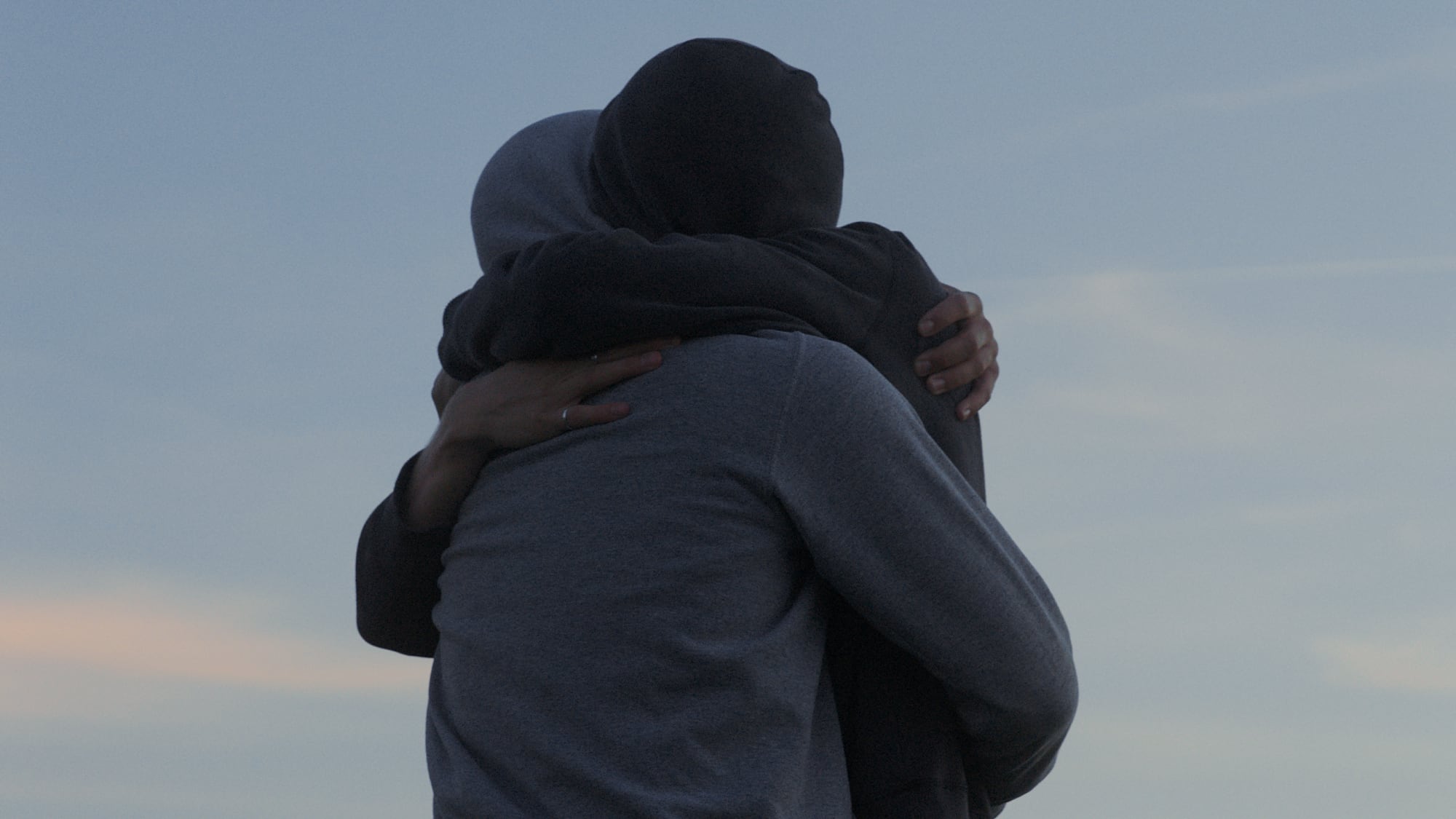
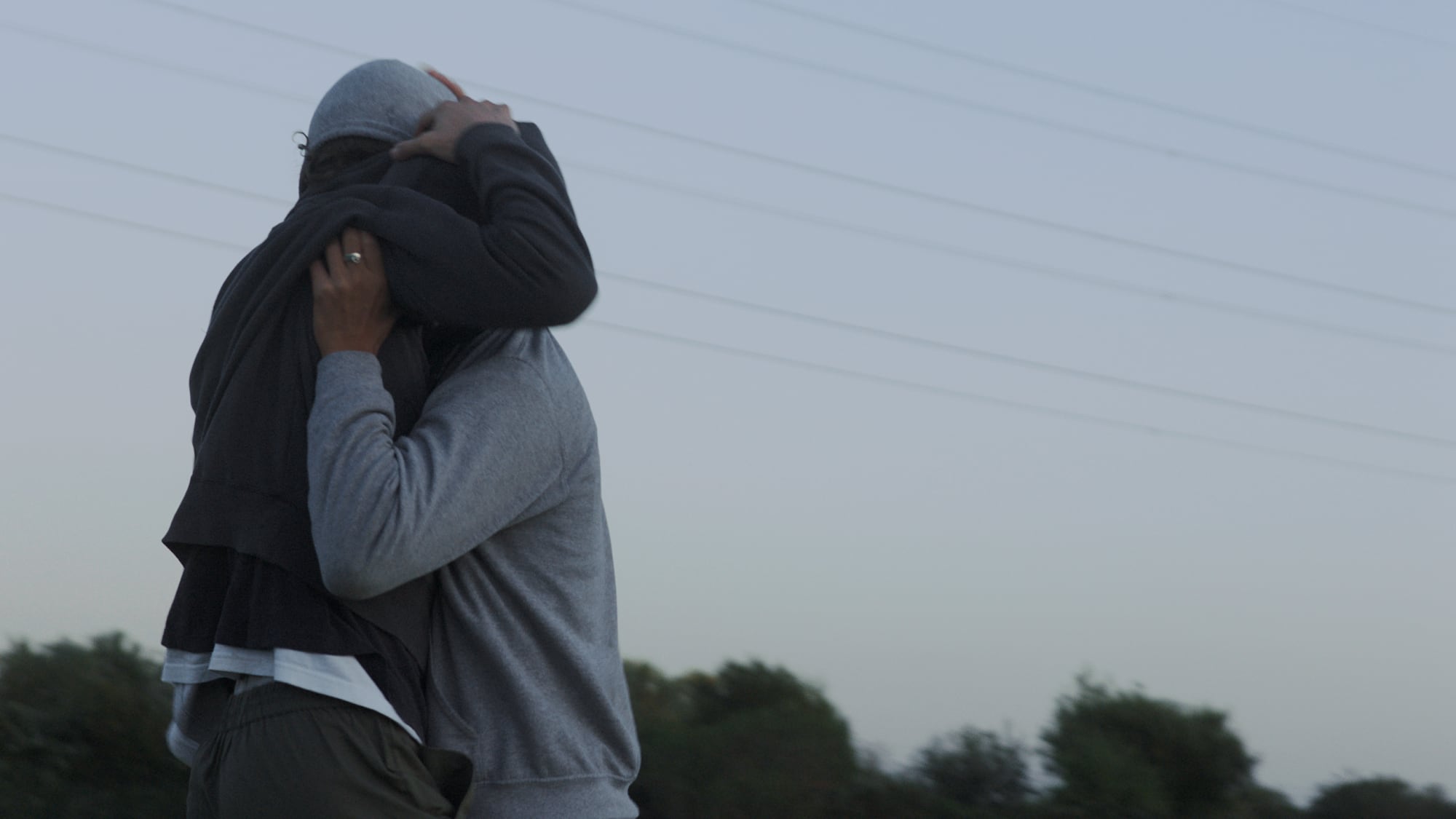
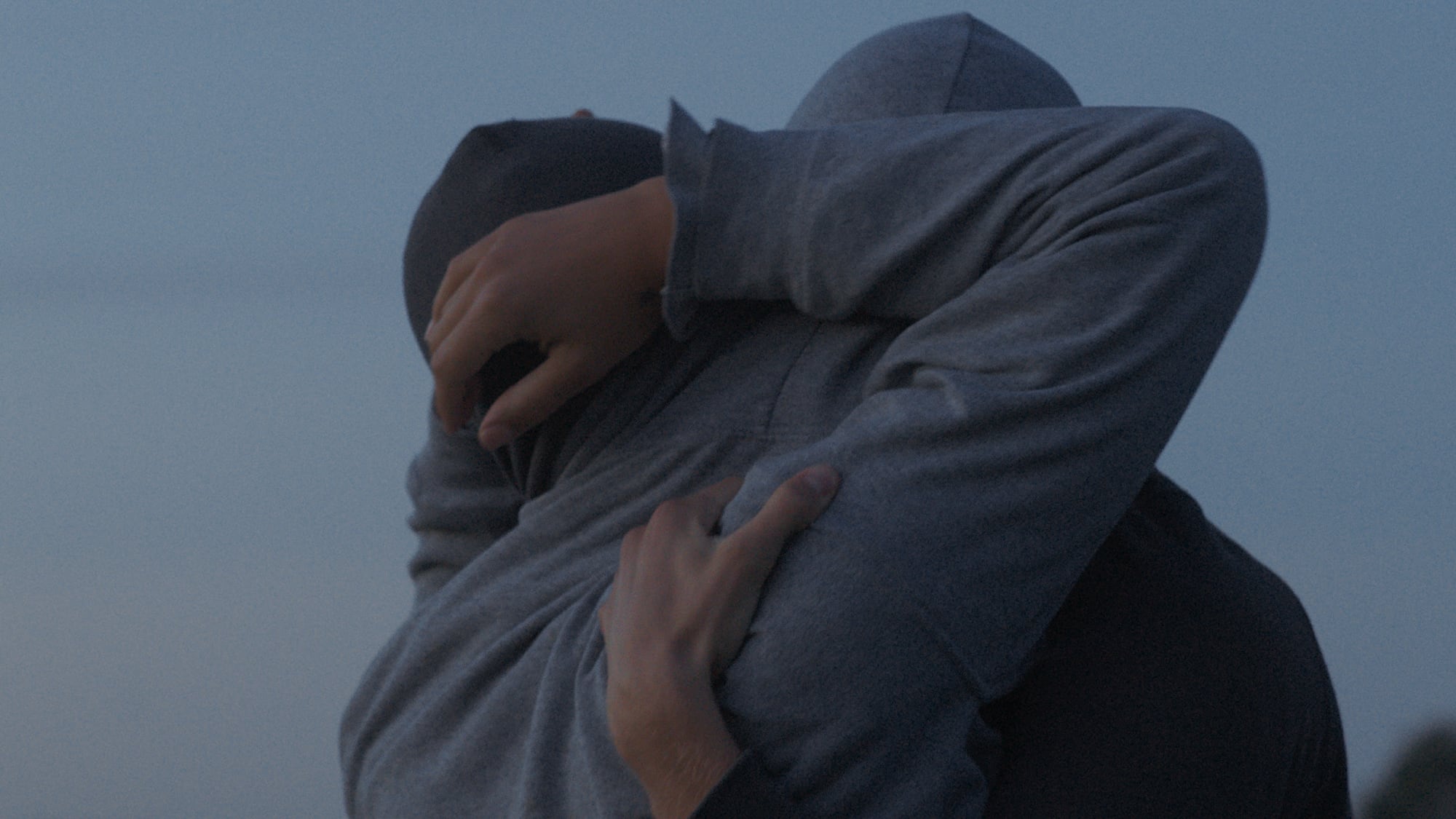
For me, it was important that we could see the tension and release within the movement. I’m interested in the small details, the subtle nuances that can elevate a simple gesture into something captivating. In the studio, we developed a series of shapes and gestures. When it came to filming the scenes I wanted to maintain a balance between precision and spontaneity so I kept a lot of space for play and improvisation.
How did you work on the closeness and familiarity of the cinematography?
I wanted the film to feel intimate. Together with my DOP, Zoe Que, we decided on a filming style that felt homemade. I wanted there to be movement in the camera so everything was shot handheld on an Arri Amira. One of the things I like about recorded movement is the ability to construct different levels of intimacy and detail by exploring the choreographic relationship between camera and performer. Handheld gave Zoe the freedom to move with the action.
I’m interested in the small details, the subtle nuances that can elevate a simple gesture into something captivating.
The majority of the film is shot close up. There were a number of reasons for this decision. First off, I wanted to direct the viewer’s eye towards the subtle shifts in the movement. Secondly, the film explores themes of being enclosed and confined. This is shown quite literally through the hoodie image. To mirror this, I wanted there to be a claustrophobic feeling in the cinematography. Lastly, I don’t want to give everything away to the viewer. I want to invite them to use their imagination to think beyond the frame. I like the idea that the absence of information tells the story. To add to this, I wanted to see as little face as possible. This was because I didn’t want the viewer to build an emotional connection to the characters. I want it all to be about the actions.

The sound design is not what you might typically associate with a dance film with the emphasis firmly on the diegetic sound.
The sound design was one of the most important elements for me. I knew I wanted everything you hear to come from within the film. I wanted the viewer to be able to engage with the environments in a visceral way. It was important for me to incorporate moments of total realism, intermittently disrupted and abstracted by the unexpected. I wanted the sound to expand and contract, shifting between something very layered and a single sound.
I had been a fan of Angel Perez’s work for a long time, and I’m in awe of the work he did on LIMPET. I remember saying to him that I want the sound to get under your skin, and I believe it achieves just that. We used elements of water and air, the city, and clothing. We discussed how we could seamlessly carry diegetic sound from one environment to another, creating a sense that each image is ‘overflowing’. He shaped the sound world with such detail. I remember in one of the early drafts, I questioned Angel about the use of sirens, to which he answered, “You’re never far away from a siren in London”. This, of course, made so much sense, so the sirens stayed.
I wanted there to be a sense that the film could exist in a loop, so I wanted to remove the notion of a beginning, middle and end.
Was this a challenging piece to edit?
Working collaboratively with my editor, Lainy Black, we questioned the significance of each moment. I wanted there to be a sense that the film could exist in a loop, so I wanted to remove the notion of a beginning, middle and end. I enjoy slow-paced storytelling. I didn’t want to feel as though we had to hook the viewer in the first 10 seconds and keep them actively engaged throughout. Personally, I enjoy when a shot lingers for an uncomfortable amount of time. Perhaps my favourite shot in LIMPET is the opening with the kettle boiling. So much is being conveyed in that frame, capturing the feeling of everything bubbling to the surface and creating a charged atmosphere.
I wanted to shift between long single shots and dynamic flash sequences. The flash sequences disrupt the rhythm and disorientate the viewer. They also speak to a state of mind. As I mentioned previously, with this film project, I was interested in exploring how we perceive the stillness of an image while so much is invisibly occurring in the mind. I wanted these flash sequences to cut through the stillness and serve as a visual representation of the characters’ thought processes. It was Lainy’s idea to further disorient the viewer by inverting some of the bathroom moments. I find it particularly interesting when we see the bath inverted, the water feels suspended in time. We also decided to keep the second character ambiguous. I think this opens up the film to so many more interpretations. Leaving the viewer to decide what their role is within this duet.



[…] The film premiered on Directors Notes on 26 March. You can watch here. […]